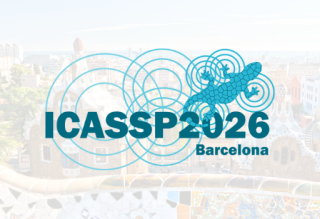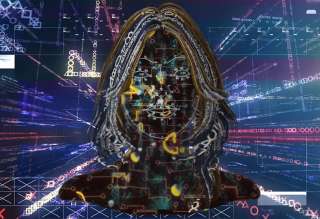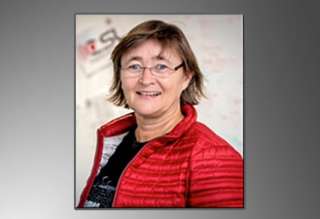SPS Feed
Top Reasons to Join SPS Today!
1. IEEE Signal Processing Magazine
2. Signal Processing Digital Library*
3. Inside Signal Processing Newsletter
4. SPS Resource Center
5. Career advancement & recognition
6. Discounts on conferences and publications
7. Professional networking
8. Communities for students, young professionals, and women
9. Volunteer opportunities
10. Coming soon! PDH/CEU credits
Click here to learn more.
The Latest News, Articles, and Events in Signal Processing
March 22-24, 2022
Location: Snowbird, UT, USA
We develop algorithms to analyzing facial expression by learning from the data. Since local characters of muscle movements play an important role in distinguishing facial expression by machines, we explore the local characters of facial expressions by introducing the attention mechanism in both supervised and self-supervised supervised manners. Our methods is experimentally shown to be effective on facial expression recognition with occlusions and facial action unit detection.

The National Institute on Deafness and Other Communication Disorders (NIDCD) will soon accept applications for a professional track Health Scientist Administrator (HSA) Program Officer with expertise and research experience in data science and cloud computing efforts leveraging “big data” for biomedical research. We anticipate that the vacancy announcement for an HSA Program Officer will be posted on 1/18/22 at http://jobs.nih.go

The Computational Medicine Laboratory (CML) at NYU Tandon School of Engineering (lab space located within the NYU Langone Medical Center’s Tech4Health Institute in Manhattan) is seeking to hire a highly motivated and creative Post Doctoral Associate to join an exciting project to conduct research on developing signal processing, machine learning and control algorithms and validation in real-time experiments with human recordings for the MINDWATCH project, and on-going research that was featur
Lecture Date: March 1st or 2nd, 2022 (Virtual Lecture)
Chapter: Tokyo
Chapter Chair: Kazuya Takeda
Topic: TBA
In this work, we analyze the convergence of constant modulus algorithm (CMA) in blindly recovering multiple signals to facilitate grant-free wireless access. The CMA typically solves a non-convex problem by utilizing stochastic gradient descent. The iterative convergence of CMA can be affected by additive channel noise and finite number of samples, which is a problem not fully investigated previously.
Wedevelop a privacy-preserving distributed projection least mean squares (LMS) strategy over linear multitask networks, where agents’ local parameters of interest or tasks are linearly related. Each agent is interested in not only improving its local inference performance via in-network cooperation with neighboring agents, but also protecting its own individual task against privacy leakage. In our proposed strategy, at each time instant, each agent sends a noisy estimate, which is its local intermediate estimate corrupted by a zero-mean additive noise, to its neighboring agents.
This paper studies a statistical model for heteroscedastic ( i.e. , power fluctuating) signals embedded in white Gaussian noise. Using the Riemannian geometry theory, we propose an unified approach to tackle several problems related to this model. The first axis of contribution concerns parameters (signal subspace and power factors) estimation, for which we derive intrinsic Cramér-Rao bounds and propose a flexible Riemannian optimization algorithmic framework in order to compute the maximum likelihood estimator (as well as other cost functions involving the parameters).
This paper investigates the problem of interval estimation for cyber-physical systems subject to stealthy deception attacks. The cyber-physical system is supposed to be compromised by malicious attackers and on the basis of that, a stealthy attack strategy is formulated. Moreover, the stealthiness of the attack strategy against
Multi-modal hashing focuses on fusing different modalities and exploring the complementarity of heterogeneous multi-modal data for compact hash learning. However, existing multi-modal hashing methods still suffer from several problems, including: 1) Almost all existing methods generate unexplainable hash codes. They roughly assume that the contribution of each hash code bit to the retrieval results is the same, ignoring the discriminative information embedded in hash learning and semantic similarity in hash retrieval.
In multi-view subspace clustering, the low-rankness of the stacked self-representation tensor is widely accepted to capture the high-order cross-view correlation. However, using the nuclear norm as a convex surrogate of the rank function, the self-representation tensor exhibits strong connectivity with dense coefficients. When noise exists in the data, the generated affinity matrix may be unreliable for subspace clustering as it retains the connections across inter-cluster samples due to the lack of sparsity.
Weighted multi-view clustering (MVC) aims to combine the complementary information of multi-view data (such as image data with different types of features) in a weighted manner to obtain a consistent clustering result. However, when the cluster-wise weights across views are vastly different, most existing weighted MVC methods may fail to fully utilize the complementary information, because they are based on view-wise weight learning and can not learn the fine-grained cluster-wise weights.
Geometric partitioning has attracted increasing attention by its remarkable motion field description capability in the hybrid video coding framework. However, the existing geometric partitioning (GEO) scheme in Versatile Video Coding (VVC) causes a non-negligible burden for signaling the side information. Consequently, the coding efficiency is limited. In view of this, we propose a spatio-temporal correlation guided geometric partitioning (STGEO) scheme to efficiently describe the object information in the motion field of video coding.
Most existing trackers use bounding boxes for object tracking. However, the background contained in the bounding box inevitably decreases the accuracy of the target model, which affects the performance of the tracker and is particularly pronounced for non-rigid objects. To address the above issue, this paper proposes a novel hybrid level set model, which can robustly address the issue of topology changing, occlusions and abrupt motion in non-rigid object tracking by accurately tracking the object contour.
Multi-view clustering aims at simultaneously obtaining a consensus underlying subspace across multiple views and conducting clustering on the learned consensus subspace, which has gained a variety of interest in image processing. In this paper, we propose the Semi-supervised Structured Subspace Learning algorithm for clustering data points from Multiple sources (SSSL-M). We explicitly extend the traditional multi-view clustering with a semi-supervised manner and then build an anti-block-diagonal indicator matrix with small amount of supervisory information to pursue the block-diagonal structure of the shared affinity matrix.
Iris pattern recognition has significantly improved the biometric authentication field due to its high stability and uniqueness. Such physical characteristics have played an essential role in security applications and other related areas. However, presentation attacks, also known as spoofing techniques, can bypass biometric authentication systems using artefacts such as printed images, artificial eyes, textured contact lenses, etc. Many liveness detection methods that improve the robustness of these systems have been proposed. The first International Iris Liveness Detection competition, where the effectiveness of liveness detection methods is evaluated, was first launched in 2013, and its latest iteration was held in 2020.
We present Poligraph, an intrusion-tolerant and decentralized fake news detection system. Poligraph aims to address architectural, system, technical, and social challenges of building a practical, long-term fake news detection platform. We first conduct a case study for fake news detection at authors’ institute, showing that machine learning-based reviews are less accurate but timely, while human reviews, in particular, experts reviews, are more accurate but time-consuming.
In this paper, we develop a framework against inference attacks aimed at inferring the values of the controller gains of an active steering control system (ASCS). We first show that an adversary with access to the shared information by a vehicle, via a vehicular ad hoc network (VANET), can reliably infer the values of the controller gains of an ASCS. This vulnerability may expose the driver as well as the manufacturer of the ASCS to severe financial and safety risks.
Pages
SPS Social Media
- IEEE SPS Facebook Page https://www.facebook.com/ieeeSPS
- IEEE SPS X Page https://x.com/IEEEsps
- IEEE SPS Instagram Page https://www.instagram.com/ieeesps/?hl=en
- IEEE SPS LinkedIn Page https://www.linkedin.com/company/ieeesps/
- IEEE SPS YouTube Channel https://www.youtube.com/ieeeSPS











